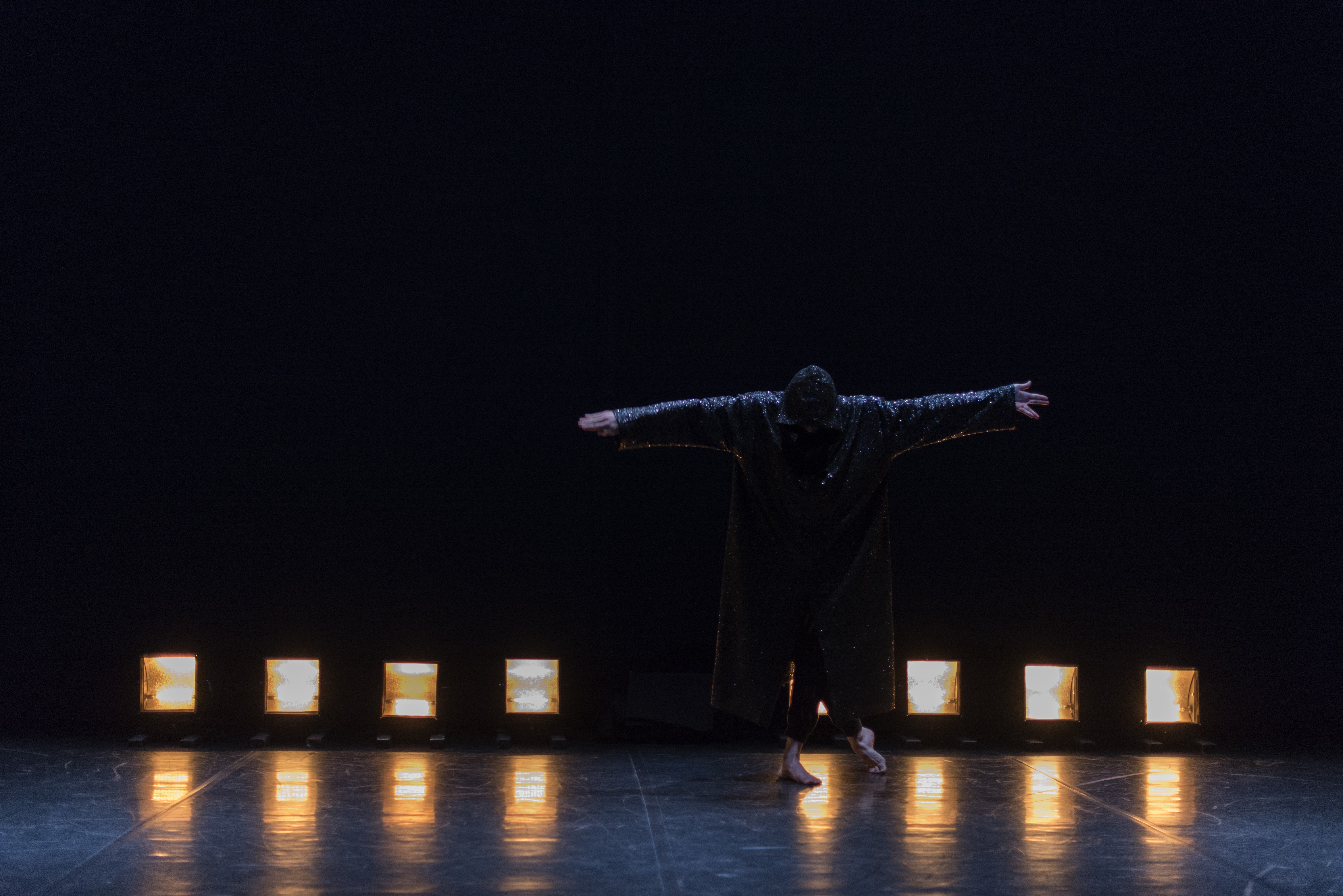INTRODUCING THE STAR
Dance solo, film diary, music album
Introducing The Star mutates as fast as the human immunodeficiency virus: it started as a dance solo, then became a film-diary and later a music album. It’s a sci-fi and queer narration about our first years together and our HIV infection. Its many mutations share a genetic code: the construction of new -and evermore necessary- metaphors about collective intimacy.
By appropriating pop strategies, Introducing The Star dismantles the self-affirmative identity of the star. The project is an epic and intimate cosmogony; an autobiographical musical film; a fable about our HIV infection populated by pregnant choir girls, flying virus, babies, aliens and electronic music.
CREDITS
A piece by Pablo Lilienfeld & Federico Vladimir
Light design Carles Rigual & Pablo Lilienfeld
Costume design Aarón López
Artistic assistance Sonia Gómez
Narrator Simon Foxall
Music Pablo Lilienfeld
Album production Fernando Vacas
Illustration Roi Pardo
Graphic design Juan Esbert
Featuring: Heidi Smith, Astrid Gnosis, Petr Davydtchenko, Fernando Vacas, Héctor Navarrete, Janet Novás, Strate Pezdirc sisters, Mónica Lilienfeld, Domas Noreika, Egle Stirna, Agne Kolontaite, Ausra Vismantaite, Dovile Alseika, Agne Vaiciukeviciute
Production MOM EL Vivero / Marta Oliveres - SUDHUM Teatro
With the support fro Comunidad de Madrid, La Casa Encendida & CA2M, Graner, TanzHaus Zurich, RedicencYoyo Zeimiai-Lituania
Thanks to Paso a 2 & DDZ Headquarters
PRESENTATIONS
25/11/2019
Screening “Introducing the Star: the choir girls’ diaries”
Anjos70. Lisbon, Portugal
9/05/2019
Screening “Introducing the Star: the choir girls’ diaries” + dj set
CoruFest, A Coruña
18/11/2018
Screening “Introducing the Star: the choir girls’ diaries”
CA2M, Madrid
17/09/2017
Screening “Introducing the Star: the choir girls’ diaries”
Competition Queer Art, Queer Lisboa
1/04/2017
“Introducing The Star: a Sanctuary for the deceased sisters”
Installation at ZOINKS!, an art show curated by Sabel Gavaldón.
Sant Andreu Contemporani, Barcelona
12/02/2017
Introducing The Star [film + dance show]
Escenas do Cambio, Santiago de Compostela
9/09/2016
Introducing The Star [film + dance show]
LEAL.LAV and Equipo Para, La Laguna, Tenerife
13/08/2016
The golden creature LIVE!
La plaza en verano. Terrazas del Matadero, Madrid
14/06/2016
Screening “Introducing the Star: the choir girls’ diaries”
Teatro Pradillo, Madrid
6+7+8/05/2016
Introducing The Star [film + dance show]
Sala Hiroshima, Barcelona
13+14/11/2015
Introducing The Star [dance show]
Madrid en Danza, Sala Cuarta Pared, Madrid
TEXT BY JOAO FERREIRA
NEW METAPHORS
When the AIDS virus emerged in the 1980s along with the many contradictory medical discourses that accompanied it, the queer artistic community reacted cautiously. In cinema, the first works produced were rather pedagogical and attempted to “normalize” or simply erase gay sexuality, as a reaction to the stigma that had rapidly been attached to the community. In her 1989 essay “AIDS and its Metaphors”, Susan Sontag upheld the need to create new (personal) metaphors to contrast stigma. On film, Canadian director John Greyson was the pioneer of such an approach with his Zero Patience (1993), a musical about the virus’ hypothetical “patient zero”, a theme he returned in his operatic Fig Trees (2009).
Imbued with the same principle, Spanish musician and choreographer Pablo Esbert Lilienfeld and Argentinian visual artist Federico Vladimir Strate Pezdirc began, a few years ago, an ambitious project that would result in Introducing the Star: the Choir Girls’ Diaries. The authors describe their project as something as mutable as the Human Immunodeficiency Virus itself. Introducing the Star has already taken the shape of an album of electronic music and a dance performance, premiered at Madrid en Danza 2015; and it’s now a documentary essay which incorporates all this experience, in the constant quotation of its own creation: cinema, performance, music, and the art gallery all come together from the narrative and aesthetic point of view, and become a structural part of the work.
The film is marked by an openly DIY spirit and an art direction that suggests a 1980’s aesthetic; the dominant theatricality staging, however, clearly results from the post-dramatic theatre of authors such as Laurie Anderson (altered, disembodied voices) or the Wooster Group (dematerialization with recourse to new media), thus resulting in a singular work that marks a step ahead in the construction of new -and evermore necessary- metaphors around HIV/AIDS.
Joao Ferreira, Film critic and director of Queer Lisboa












































